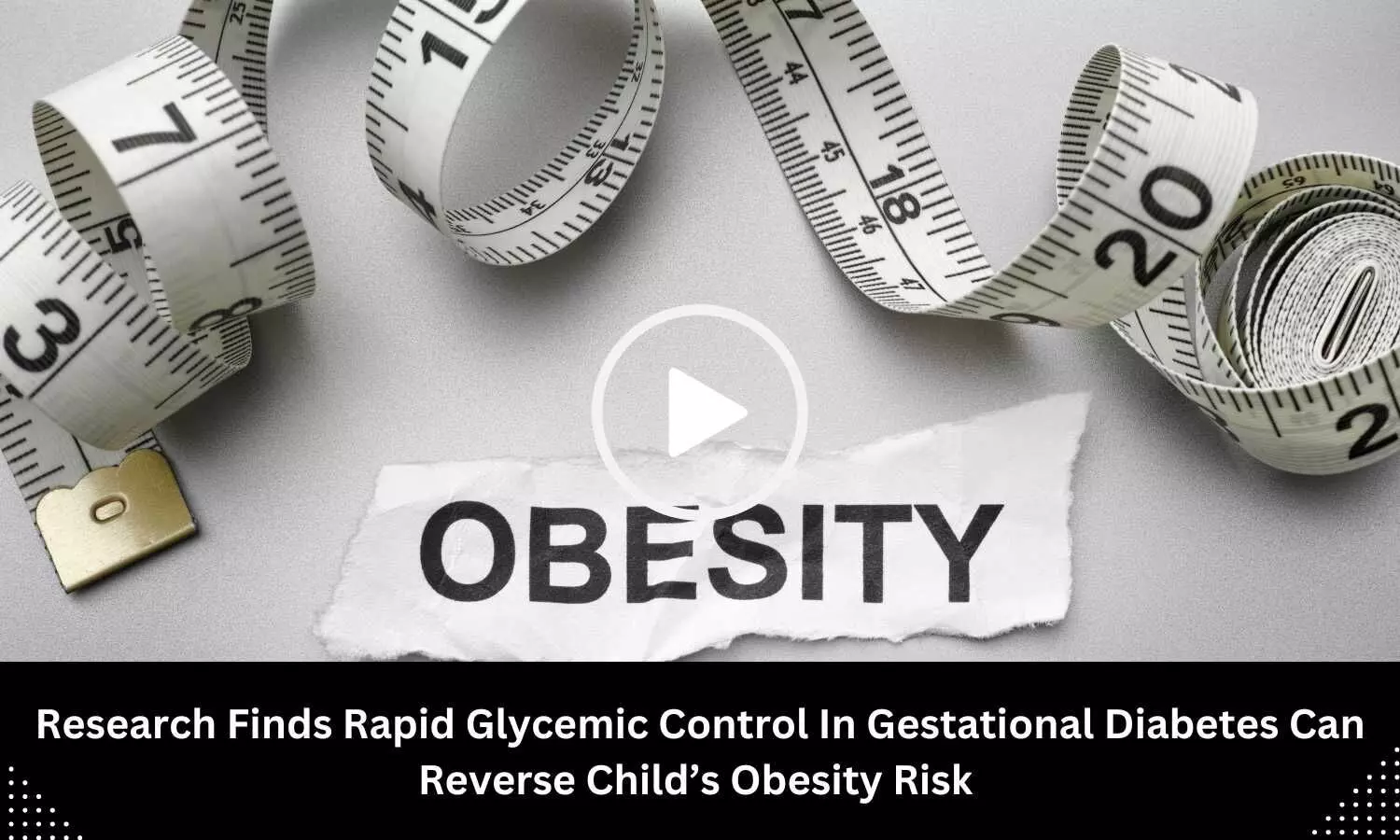Research Finds Rapid Glycemic Control In Gestational Diabetes Can Reverse Child’s Obesity Risk

Swiftly achieving glycaemic control after a diagnosis of gestational diabetes can bring the baby’s risk of obesity in childhood down to a level similar to that of children whose mothers did not have gestational diabetes. These findings were presented at the annual meeting of the European Association for the Study of Diabetes (EASD) in Madrid, Spain (9-13 September).
Gestational diabetes, a type of diabetes that can develop during pregnancy, affects 14% of pregnant women globally and is becoming more common, with those who are living with obesity, have a family history of diabetes and/or older at greater risk.
It usually goes away after birth but carries a range of risks during and after pregnancy. Children are also at higher risk of cardiometabolic complications later in the life, including obesity and diabetes.
“Achieving glycaemic control soon after the diagnosis of gestational diabetes and maintaining it through pregnancy, up to the delivery, is associated with reduced rates of perinatal complications,” says lead researcher Dr Assiamira Ferrara, Director of the Center for Upstream Prevention of Adiposity and Diabetes Mellitus, Division of Research, Kaiser Permanente Northern California, Oakland, California, USA.
“Treatments, which include healthy diet, exercise and blood-sugar lowering medications, aim to achieve optimal glycaemic control – keep blood sugar in the normal range – during pregnancy.”
However, the role of glycaemic control on child obesity risk has yet to be proven.
To find out more, Dr Ferrara and colleagues studied 258,064 women who gave birth in the US between 2011 and 2023 and their children.
Obesity prevalence at 2-4 years was 15.1% in children of women without gestational diabetes, and 15.9%, 18.7%, 20.9% and 24.6% in children of women in the stably optimal, rapidly improving to optimal, slowly improving to near-optimal and slowly improving to suboptimal glycaemic control groups, respectively.
At 2-4 years, children of women with gestational diabetes in the stably optimal and rapidly improving to optimal groups had a similar risk of obesity to those whose mothers didn’t have gestational diabetes.
Children of women with gestational diabetes in the slowly improving to near optimal and slowly improving to suboptimal groups had a higher risk of obesity (13% and 23% higher, respectively).
At 5-7 years, only children of women with gestational diabetes in stably optimal group had an obesity risk similar to that observed in children of individuals without gestational diabetes.
The children whose mothers were in the rapidly improving to optimal and slowly improving to near optimal were at 18% and 19% higher risk of childhood obesity, respectively, than those whose mothers didn’t have gestational diabetes. For those whose mothers blood sugar was the least well controlled, the slowly improving to suboptimal group, the risk of childhood obesity was 30% higher.
Reference: Study Presented at Annual meeting of the European Association for the Study of Diabetes (EASD) in Madrid, Spain (9-13 September).
Facebook Comments



